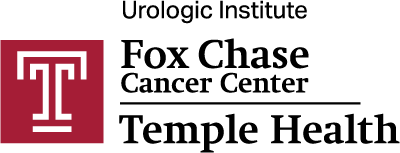
A healthy, 20-year-old male from Georgia began suffering from shortness of breath, chest pain, and syncope. Patient had no known history of DVT or PE, but a CT scan revealed 'extensive pulmonary emboli.'
He was started on anticoagulation therapy but continued to worsen, suffering from progressive breathing issues and functional limitations. Suspecting CTEPH, his local physician in Atlanta, Georgia, referred him to the Pulmonary Hypertension, Right Heart Failure & CTEPH Program at the Temple Heart & Vascular Institute. When he arrived for evaluation, he could only walk two blocks before having to stop and rest.

Ventilation-perfusion (VQ) scan showing perfusion defects
TEMPLE DIAGNOSTIC FINDINGS
- Severe pulmonary hypertension -right heart catheterization showed PA pressure 80/28 (mean 45) mm Hg
- Significant right heart enlargemen tand dysfunction
- Severe perfusion defects in both lungs on VQ scan (V stands for ventilation, Q stands for perfusion)
- Significant blockages of many branches of pulmonary arteries in both lungs seen on CT angiogram and pulmonary angiogram
CLINICAL COURSE
- Evaluated by Temple's multidisciplinary CTEPH team
- Determined to be a candidate for Pulmonary Thromboendarterectomy (PTE) surgery
- Underwent PTE 12.9.20 - post-operative PA pressures normalized to 25/14 (mean18) mm Hg
- Uncomplicated post-operative course
- Discharged from the hospital 6 days after surgery

CT Angiography chest with pulmonary artery clot and enlarged right atrium, right ventricle, and right ventricular hypertrophy

Pulmonary angiography with significant defects from CTEPH in both lungs
OUTCOMES
- Patient's pulmonary hypertension and heart failure were resolved
- The patient has had a complete resolution of his shortness of breath and a return to normal quality of life

Extensive chronic clot removed from both lungs
KEY POINTS
- CTEPH is a severe and potentially life-threatening form of pulmonary hypertension and heart failure that results from chronic blood clots in the lungs
- It can affect adults of all ages, including very young patients
- Patients do not need to have a known history of prior blood clots in the legs (DVT) or lungs (PE)
- Warrants evaluation by expert CTEPH center for diagnosis followed by safe and effective management
- Management includes consideration for PTE, balloon pulmonary angioplasty (BPA), medical therapy, or a combination of all three
- With expert care, CTEPH treatment can often lead to cure
WHEN TO REFER
If a patient is short of breath and has a history of pulmonary embolism, a referral to look for CTEPH is recommended. The Temple Pulmonary Hypertension, Pulmonary Hypertension, Right Heart Failure & CTEPH Program, led by Paul Forfia, MD, and Anjali Vaidya, MD, is ready to assist at any point in your patient's journey from testing and monitoring to treatment and follow-up.
To arrange for an immediate consultation with a Temple specialist, please call 215-707-7636 or fax 215-707-9977.
Patient records can be sent to:
Pulmonary Hypertension, Right Heart Failure & CTEPH Program
3401 N. Broad Street, Parkinson Pavilion, 9th Floor
Philadelphia, PA 19140
Lead Physicians
Anjali Vaidya, MD, FACC, FASE, FACP
Co-Director, Pulmonary Hypertension, Right Heart Failure & CTEPH Program, Temple University Hospital

Co-Director, Pulmonary Hypertension, Right Heart Failure & CTEPH Program, Temple University Hospital

Chief, Cardiovascular Surgery, Temple University Hospital


